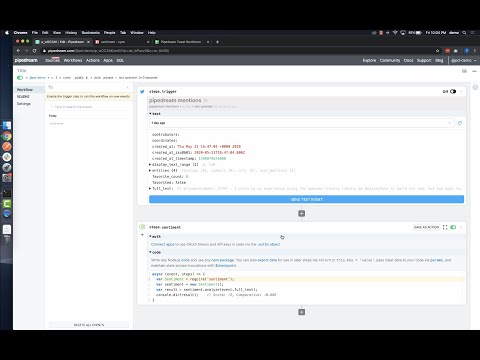What do you want to automate
with Bugsnag and Google Sheets?
Prompt, edit and deploy AI agents that connect to Bugsnag, Google Sheets and 3,000+ other apps in seconds.
Trusted by 1,000,000+ developers from startups to Fortune 500 companies
Popular Ways to Connect Bugsnag with Google Sheets#
Popular Bugsnag and Google Sheets Triggers#
Emit new event when an existing error receives a new occurrence.
Emit new event when a new release version is deployed to a selected project.
Emit new event each time a comment is added to a spreadsheet.
Popular Bugsnag and Google Sheets Actions#
Create a new project for a specific organization in Bugsnag. See the documentation
Add a single row of data to Google Sheets. See the documentation
Add multiple rows of data to a Google Sheet. See the documentation
Get all values or values from a range of cells using A1 notation. See the documentation
Create conditional formatting with color scales or custom formulas. See the documentation
Overview of Bugsnag#
The Bugsnag API enables you to interact programmatically with Bugsnag data, letting you manage and access error reports, project settings, and release tracking for your applications. With Pipedream's integration, you can automate workflows that respond to new errors, aggregate error data for analysis, or synchronize error information with other tools in your development stack.
Connect Bugsnag#
import { axios } from "@pipedream/platform"
export default defineComponent({
props: {
bugsnag: {
type: "app",
app: "bugsnag",
}
},
async run({steps, $}) {
return await axios($, {
url: `https://api.bugsnag.com/user`,
headers: {
"Authorization": `token ${this.bugsnag.$auth.api_token}`,
},
})
},
})
Overview of Google Sheets#
The Google Sheets API allows for the creation, reading, updating, and deletion of data within Google Sheets, enabling a robust platform for spreadsheet management and data manipulation. Through Pipedream, you can craft serverless workflows that respond to various triggers, such as webhook events, emails, or scheduled times, to interact with Google Sheets. This synergy can automate reporting, synchronize data across applications, manage inventory, track leads in a CRM, or even conduct survey analysis by updating and retrieving sheet data on the fly.
Connect Google Sheets#
import { axios } from "@pipedream/platform"
export default defineComponent({
props: {
google_sheets: {
type: "app",
app: "google_sheets",
}
},
async run({steps, $}) {
return await axios($, {
url: `https://www.googleapis.com/oauth2/v1/userinfo`,
headers: {
Authorization: `Bearer ${this.google_sheets.$auth.oauth_access_token}`,
},
})
},
})
Related Videos#



Community Posts#


